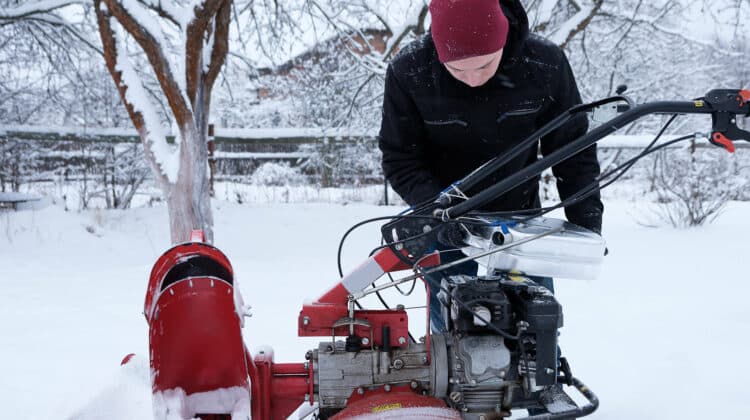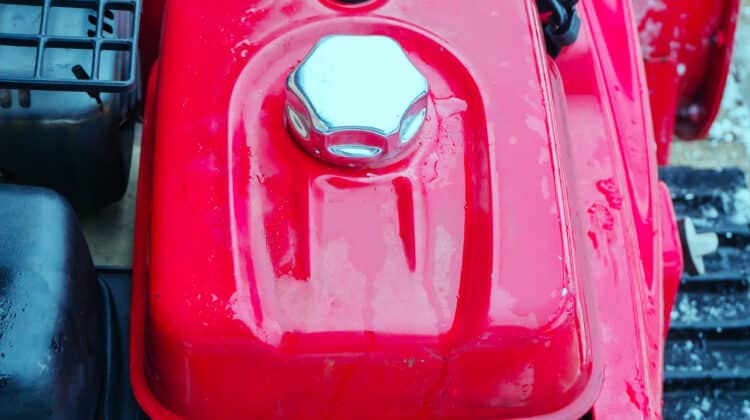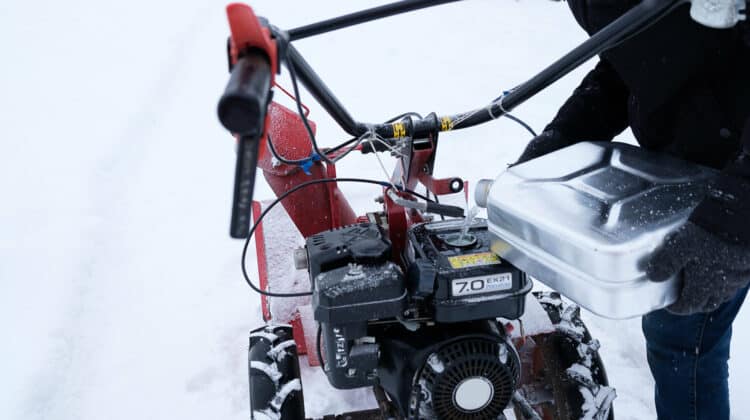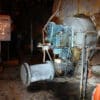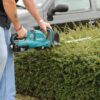Do you want to know how much gas does a snow blower use?
Like all gas-powered machines, how much gas is consumed depends on how they operate, and snow blowers are the same.
If you want to get specific information about this, browse through its user’s manual. It will provide all the necessary details you need about your snowblower.
Most snow blowers can hold one gallon of gas. The smallest models can hold one liter or 0.26 gallons, while the biggest ones have a one and one-half gallon capacity.
For instance, a five-horsepower snowblower will consume more than two pounds of gas per hour. A gallon of gas contains 6.5 pounds of fuel, so 3.25 pounds of gas (one-half US gallon) will last more than 3.25⁄2 = 1.65 hours, which is less than two hours.
Table of Contents
What are snow blowers?
A snow blower is a machine that removes snow in locations covered with snow. It is utilized in residential areas but also has commercial and industrial applications.
It is effective in removing snow in passageways, driveways, and even rooftops. It is also used during road construction in clearing pathways.
The kinds of snow blowers available in the market are:
- Walk behind — This type of snowblower functions by utilizing its engine in creating a powerful suction. One person operates it will push the handlebar, which enables the machine to move forward and sucks snow and debris.
- Push type — This kind of snowblower needs two operators to separately push the handles. One pushes and rotates the wheels, and as the front wheels turn at an angle, another operator will change position and begins pulling the handle.
- Pull type — It has one operator to pull the handle and another to pull.
Coming from this, you can select either a one, two, or three-stage model.
For light snow and small areas, a one-stage snowblower is sufficient.
For larger areas and heavier snowfall, you can choose between a two-stage or three-stage snowblower.
With a two-stage snowblower, the snow clearing operation happens in two stages. The first stage involves gathering and breaking up the snow into two smaller pieces by an impeller blade. The second stage is where snow and ice are blown off at a distance via a discharge chute.
The three-stage snow blower is similar to a two-stage one, but the process is quicker and can clear more snow in larger areas. It also has an accelerator, which works as a third auger.
The way to differentiate them is this: a single-stage snow blower has one auger, a two-stage has two augers, and a three-stage has three augers.
What are the parts of a snowblower?
A typical snowblower has three principal components:
- The engine enables all the parts to work together — This snowblower component includes all parts relating to power: the ignition system, cylinders, pistons, camshafts, and valves. These work in unison in converting fuel into moving air that enables strong suction in sucking up snow and debris.
- The chute is the passageway for snow and debris — This snowblower part holds and discharges the snow and debris outside. It can be adjusted so it can fit any size of the area.
- Augers push the snow and debris to the chute — These consist of two blades fasted to the shaft, which is responsible for bringing up and pushing the snow and debris to the discharge chute. These must be powerful enough to lift the snow and debris without getting damaged.
What type of gas does a snowblower use?
Experts recommend an eight-nine octane or higher fuel grade for your snowblower. The ratio of gas to oil varies but is usually 16:1 and 50:1.
If you want to make sure, check on the user’s manual for the correct ratio for your snowblower. Even though gas with ethanol is not recommended, the gasoline you get in the pump has 10% ethanol.
Can you use mixed gas for your snowblower?
Two-stroke engines need a combination of oil and gas for their tanks. The mixture is necessary for lubrication and combustion.
For instance, a two-stroke snow thrower needs a 50:1 ratio of gas to oil, which is one gallon of gas to 2.5 ounces of oil.
Can you use gasoline without ethanol for your snowblower?
For smaller engines like snowblowers, chainsaws, snowmobiles, and chippers, non-ethanol gas is the best type of fuel. This type of gasoline is less corrosive to machines and enables them to last longer.
How are you supposed to buy gas for your snowblower?
Many people with experience with snowblowers use 87% octane for fuel, which they find adequate. The costlier higher octanes are not necessary anymore.
If there is available gasoline with no ethanol in your area, you are fortunate since it is perfect for small engines.
Do snowblowers need oil in their systems?
Like all machines, snowblowers need oil for lubrication purposes. However, they use a different kind since they primarily operate in cold weather, which is a weighted oil called SAE 5W – 30.
Also, browse through your snowblower’s user’s manual, specifically in the maintenance section, for its correct oil weight.
Is it alright to use non-oxygenated gas in my snowblower?
To achieve the greatest performance for your snowblower, you will need to use as fuel a ninety-one octane, non-oxygenated gasoline (ethanol-free). This type of fuel is for off-road vehicles and power sports, which many gasoline stations provide.
At any rate, to avoid phase separation, use ethanol-free gas during the long months of storage.
What are the tips to know how much gas your snowblower can hold?
- It is crucial to know that you do not fill the snowblower tank with only gas. Two-stroke engines need a mix of gas and oil and include a stabilizer to prevent it from separating.
- If you accidentally flood the engine, make sure to leave the gas cap off to let the extra gasoline evaporate. You can also try draining or pumping it out. Also, remove the sparkplug and clean it once the gas level is lower, or else it might get damaged.
- Do not leave gas in the snowblower tank if there is no snow to clear, or else it might clog up the carburetor. Also, it will allow moisture to mix with the gas and condense, which causes erosion.
How can I make my snowblower more powerful?
There are ways to increase the power of your snowblower. This way, it can throw snow at a greater distance.
Installing an impeller kit in a snowblower
A single-stage snow blower is regarded as the weaker type compared to two or three-stage ones because they do not have impellers. You can make it more powerful by installing an impeller kit through it.
Impellers are fan blades that increase the throwing distance by projecting the snow outside. It reduces the distance between the chute and the auger.
For a two-stage snowblower, you can replace the current impeller with another one with a bigger diameter, which increases its throwing distance.
Lubricating the chute in a snowblower
The discharge chute is where the snow and debris pass through and are thrown outside. As a result, it will get wet and sometimes clogged.
You have to maintain it through regular lubrication. You can adopt a DIY solution by spreading cooking oil or cooking spray.
You can also use a non-stick spray since it is not greasy. It enables a protective covering that keeps snow and debris from sticking.
Lubricate the chute once every season or twice a month if you frequently use your snowblower.
Increasing the speed and adjusting the wheels in a snowblower
Just increasing the speed of your snowblower will increase the power and keep it from getting clogged. It will also enable the auger in projecting snow out with more force. It will also function more powerfully by simply driving it in a straight line.
Adjust the wheels to attain near-perfect balance since a limping snowblower reduces power. Make sure that rubber tires are not underinflated and have equal pressure.
Regularly cleaning the snowblower
Newer snowblower models have cleaning tools included upon purchase, which will allow you to remove any residue in the auger housing.
Cleaning the auger regularly will make sure it stays unclogged and maintain its power.
Is it necessary to know how much gas does a snowblower use?
It is, and gasoline is the lifeblood of any machine and with a snowblower, make sure you are using the right kind. Worrying how much gas it uses would not be an issue anymore.
